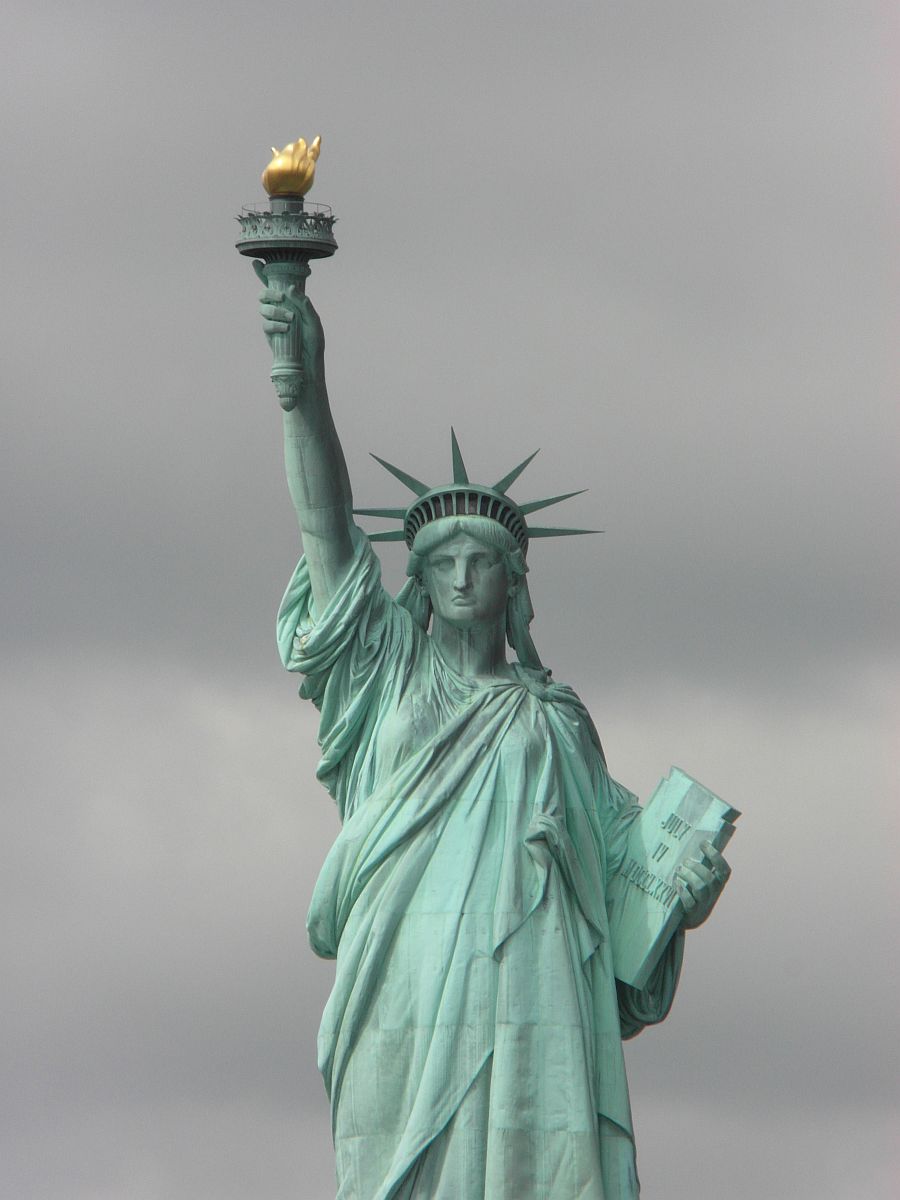
For a long while we'd wanted to see the autumn colours of the American Northeast (typified by the phrase "New England in the Fall"). Searching on the internet I had found Blount Small Ship Adventures, whose advertisement that they "go where the big ships cannot" sounded really interesting as they offered an inland cruise from New York to Montreal via the Hudson River, the Erie Canal, the Oswego Canal, Lake Ontario, and the St Lawrence River. On Blount's recommendation we contacted an English travel agent, North American Highways, who were extremely helpful in making all the necessary arrangements and connections for us.
Although it would have been fun to spend a few days in New York, it was New York Fashion Week so the few hotels that were available were incredibly expensive and we opted instead just to spend the night beforehand on board the ship. Arriving after a good flight to Newark we had a brief panic when there was no sign of the car that was supposed to be meeting us, but eventually with the help of a limo driver from another company at the airport we contacted our driver; he was waiting in the wrong place because he had not realised that flights from England were International rather than Domestic!
We were warmly greeted on board the Grande Caribe which was moored at the very smart Chelsea Piers, and were shown to our cabin which - being one of the largest on board - was absolutely excellent. If you are contemplating a trip on this ship I strongly recommend that you treat yourself to one of the "category IV" cabins if you possibly can. Certainly the passengers in the smallest (category I or II) cabins found that they were very cramped, and they also commented that the forward cabins in these categories were uncomfortably close to the rather noisy ship's bow-thrusters. The ship is 180ft long by 40ft beam, with 44 cabins, and unusually features a folding wheelhouse to enable it to pass under the low bridges on the Erie and Oswego Canals.
Dinner that night was absolutely excellent, with seafood delights such as lobster and king-prawn, setting a high standard which they managed to maintain for the whole trip. In accordance with their BYOB (Bring Your Own Bottle) policy, wine was served at the meal but instead of the bar selling any other drinks it merely provided unlimited mixers with ice and nibbles to accompany passengers' own drinks which they were invited to bring with them. This policy actually worked extremely well, once it had been explained firmly to the small number of passengers who seemed to think that it gave them the right to help themselves to every other passenger's bottles from the bar. After buying duty-free drinks for ourselves at the airport, we knew that one of our tasks the next morning would be to find a liquor store and buy a few bottles of wine as well.
How do you explore New York in just one morning? You can't. The best you can do is just to walk around and soak up the atmosphere, so we left the ship on foot immediately after breakfast and walked into Manhattan. We passed through Chelsea (noting the plaque to Leonard Cohen on the wall of the Chelsea Hotel) and strolled along to the junction of 5th Avenue and Broadway. Even in the early morning the atmosphere of the city was so full of energy that it was easy to see how it could become addictive. The streets were crowded with people, a great many of whom were walking their dog around the many parks and dog-friendly green areas, and we wished we could have spent a few days here but time was pressing and after a couple of enjoyable hours we had to make our way back to the ship. On the way, as planned, we found a liquor store where the extremely helpful manager assisted us in choosing 6 good bottles of wine to take back to the ship.
By lunchtime the rest of the passengers had joined the ship, and immediately after lunch we set sail for a tour of New York harbour. We saw spectacular views of Manhattan, Ellis Island and the Statue of Liberty, before we turned our backs on the threatening weather and headed north up the Hudson River towards welcoming blue skies. There were a few boats moving on the river; mainly groups of large barges pushed by powerful tugs but also several private boats which our Captain told us were Snowbirds (ie Canadians) heading south for the winter. We travelled as far as Bear Mountain where a simple jetty served as a basic overnight mooring; we could not leave the ship for the walkway between the jetty and the shore was underwater, a fact which reminded us that the Hudson River is tidal all the way to Troy about 150 miles north of New York. The one disadvantage to this mooring was that the main railway line passed only a few yards away; noisy freight trains that must each have been over a mile long passed us all night long, and every one of them gave a long booming hoot right outside our window.
The next morning's sunrise over the mountain was spectacularly beautiful. We thought the colours were wonderful as we stepped on deck just before dawn, but then as the sun came over the horizon it seemed to set the mountains alive, whetting our appetite for the beautiful sights that awaited us as we travelled north.
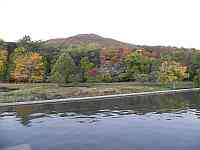 |
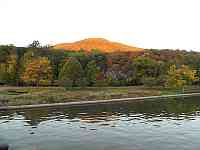 |
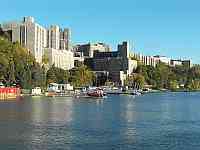 |
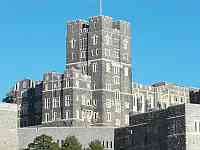 |
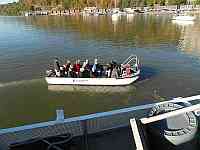 |
Bear Mountain, just before dawn |
The same scene less than 30 minutes later. |
West Point military academy was a surprisingly impressive building |
Passengers were ferried ashore to visit the Academy |
|
That morning's excursion was a visit to West Point Academy. Their visitors' dock was under repair so our ship simply drifted about in the river while passengers were ferried ashore in the ship's boat so we just sunbathed on the roof of the ship, relaxing and trying to re-adjust our body-clocks to American time.
The next day we reached Troy, the navigable limit of the River Hudson. On a walking tour of the city we were lucky enough to be able to visit the incredibly beautiful St Paul's Church which had been completely fitted out by the Tiffany glass company in the 1890's and is regarded as one of their greatest masterpieces.
Troy is the upper navigable limit of the Hudson; from here the Champlain Canal heads North and the Erie Canal (our route) runs to the East. Our ship will be a close fit under the bridges of the Canal, and while we had been in Troy the crew had unbolted the wheelhouse and lowered it to the foredeck with a couple of chain-hoists.
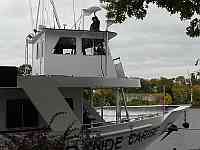 |
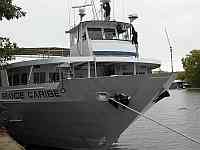 |
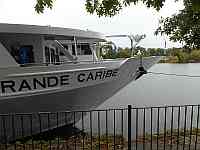 |
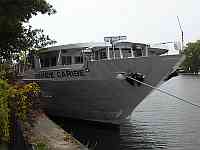 |
The ship's wheelhouse in its normal position, being made ready for lowering |
The wheelhouse after being lowered to the fore-deck |
||
Now read about the next part of the journey, on the Erie Canal
All pictures on this site are © Allan Jones unless otherwise stated